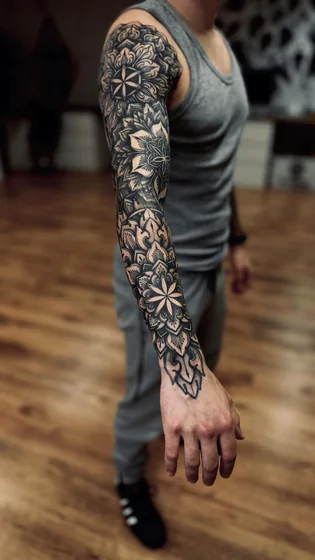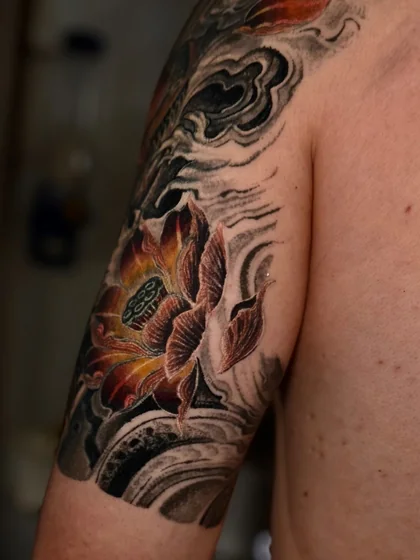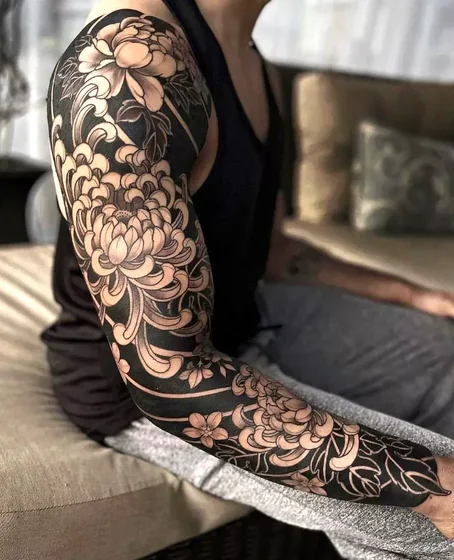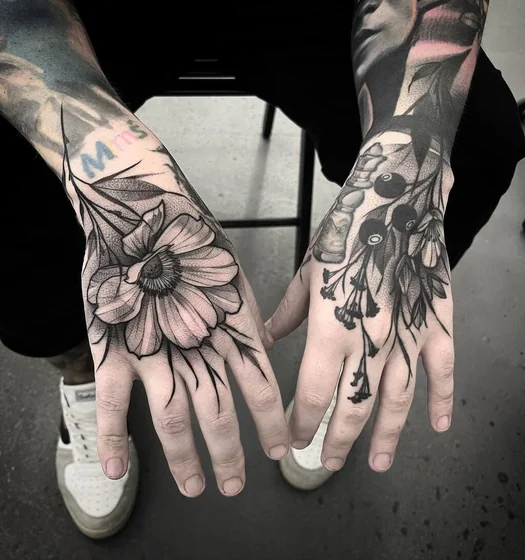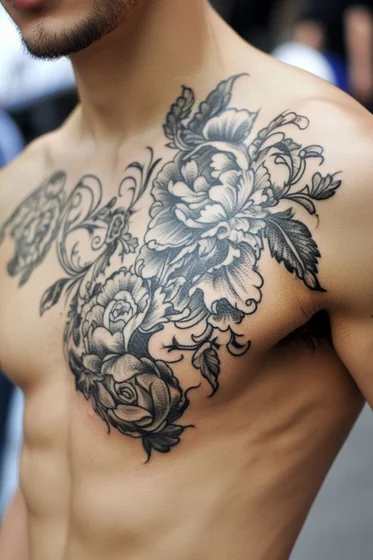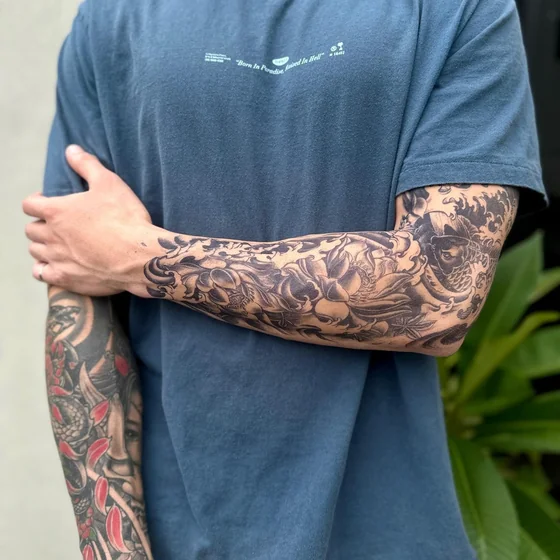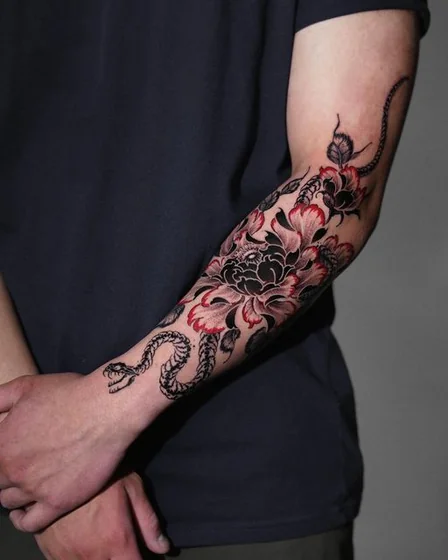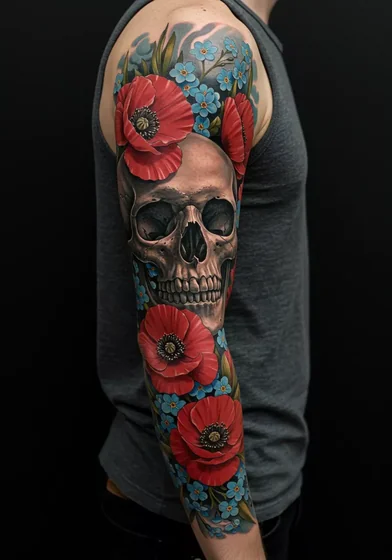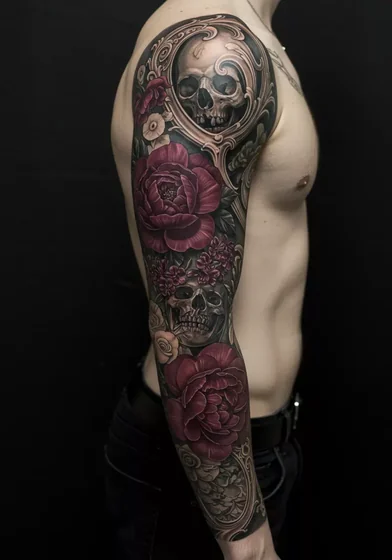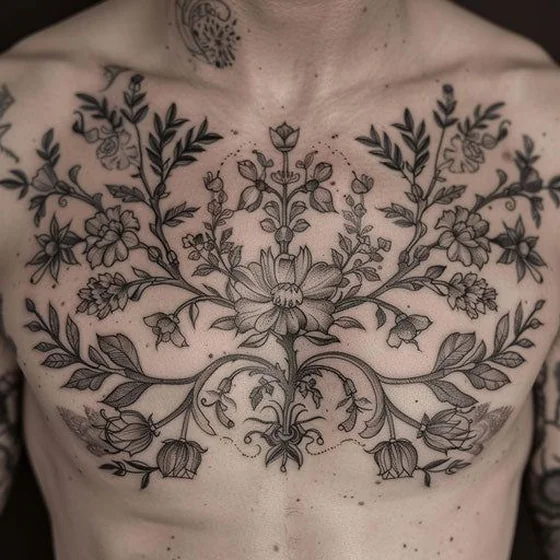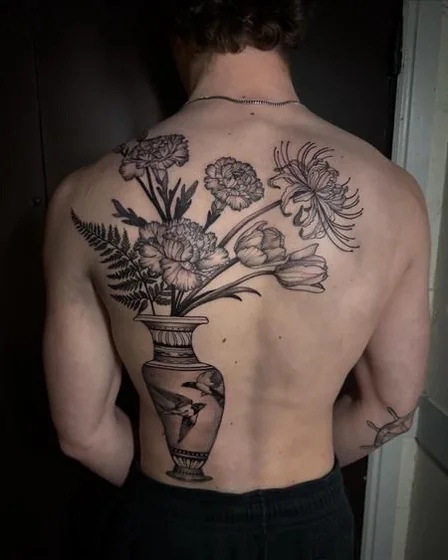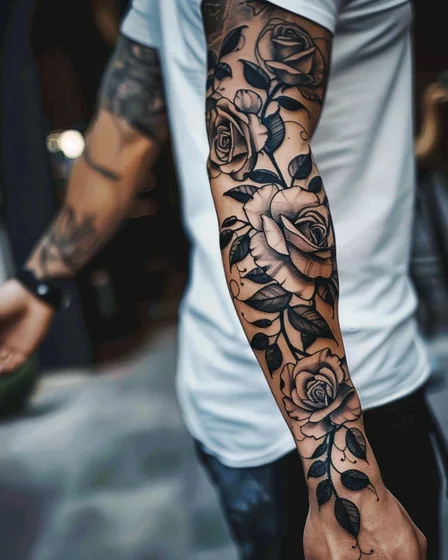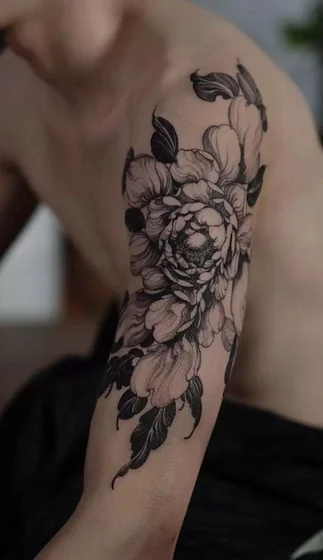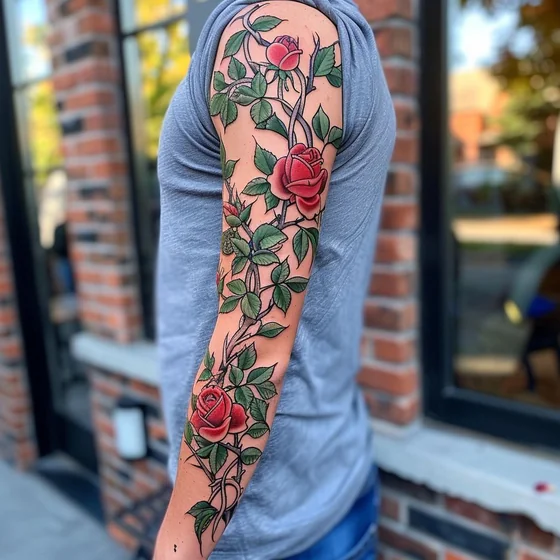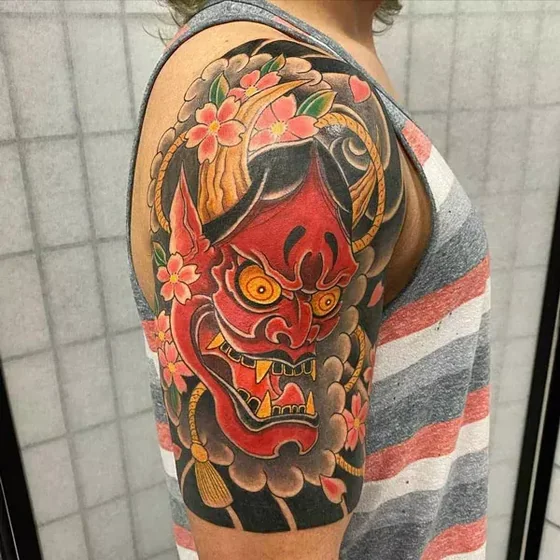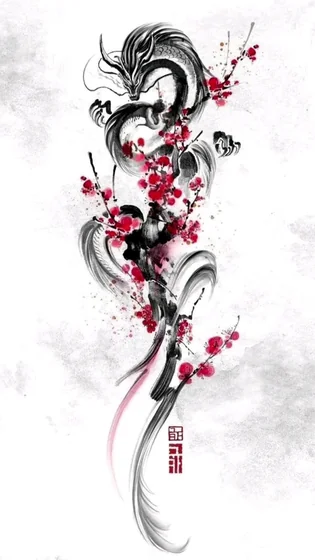Filters
Tattoo Ideas
3D Virtual Try-On
Stop guessing. See exactly how your tattoo will look on your body. Upload your design, and visualize it instantly.
- Realistic 3D skin simulation
- Multiple body positions
- Upload your own design
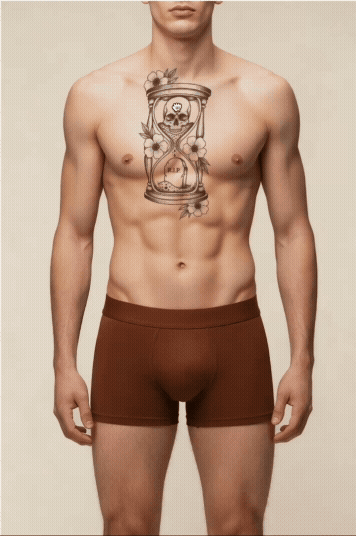
Why Modern Men Embrace Botanical Ink
The shift toward botanical designs among men reflects evolving masculinity that values depth over rigid stereotypes. Nature's resilience—thorns protecting roses, trees weathering storms, wildflowers thriving in harsh conditions—mirrors masculine strength more authentically than traditional aggressive imagery. Confident men recognize that choosing botanical art demonstrates security in their identity rather than weakness.
The key lies in execution style. Dark blackwork transforms delicate petals into bold statements. Geometric framing adds structure to organic forms. Pairing blooms with skulls, daggers, or architectural elements creates visual tension that reads unmistakably masculine while maintaining botanical beauty.
Masculine Botanical Style Strategies
Design Approaches That Project Strength
- Dark Botanical Blackwork: Heavy black fills with negative space detail | Creates dramatic contrast and modern edge | Works powerfully on forearms, chest, or calves
- Japanese Floral Tradition: Peonies and cherry blossoms with wind bars and waves | Rooted in samurai warrior culture | Communicates honor and impermanence
- Geometric Hybrid: Botanical elements within mandala or sacred geometry frameworks | Balances organic and structural | Appeals to analytical minds
- Death and Bloom Contrast: Skulls with blooming flowers, withered versus fresh petals | Explores life's duality | Makes philosophical statement about mortality and growth
- Minimalist Single Stem: Clean black line work without shading or color | Projects confidence through restraint | Ideal for professionals wanting subtle sophistication
Your professional context matters—creative industries embrace elaborate sleeve compositions, while corporate environments favor contained pieces on easily concealed areas.
Flower Selection for Male Identity
Ditch concerns about specific blooms being "too feminine." Execution determines perception, not flower type. That said, certain species carry traditionally masculine associations: thistle represents Scottish warrior heritage, lotus symbolizes spiritual warrior discipline in Buddhism, protea flowers embody bold uniqueness. Roses work powerfully when styled with thorns emphasized—beauty protected by defense.
Many men choose flowers tied to personal stories: a late family member's favorite bloom, flowers from meaningful locations, or botanical elements from cultural heritage. These narrative connections override any gendered assumptions.
Placement Strategies for Masculine Builds
Larger muscle groups provide natural canvases that enhance botanical drama. Chest pieces allow blooms to follow pectoral curves, creating movement with muscle flexion. Forearm placements showcase intricate detail while maintaining professional visibility control. Calf and thigh placements offer substantial space for elaborate compositions without workplace concerns.
Side torso pieces let vertical stems follow ribcage lines naturally. Back pieces provide the ultimate canvas for sprawling garden compositions or single massive bloom statements. Consider how your typical clothing reveals or conceals different areas when planning visibility.
Breaking Through Design Stereotypes
If you're hesitant about botanical work feeling "not masculine enough," examine whose approval you're seeking. The most confident men commission what resonates personally rather than performing for others' expectations. Many report that botanical pieces spark more meaningful conversations than traditional masculine imagery—people engage with the symbolism and artistry rather than making surface judgments.
Remember that historical warriors from samurai to Celtic fighters incorporated botanical elements into their visual identity. You're not breaking new ground; you're reclaiming timeless masculine expression.
Exploring Feminine Botanical Interpretations
Curious how women approach the same botanical themes differently? View for women.
